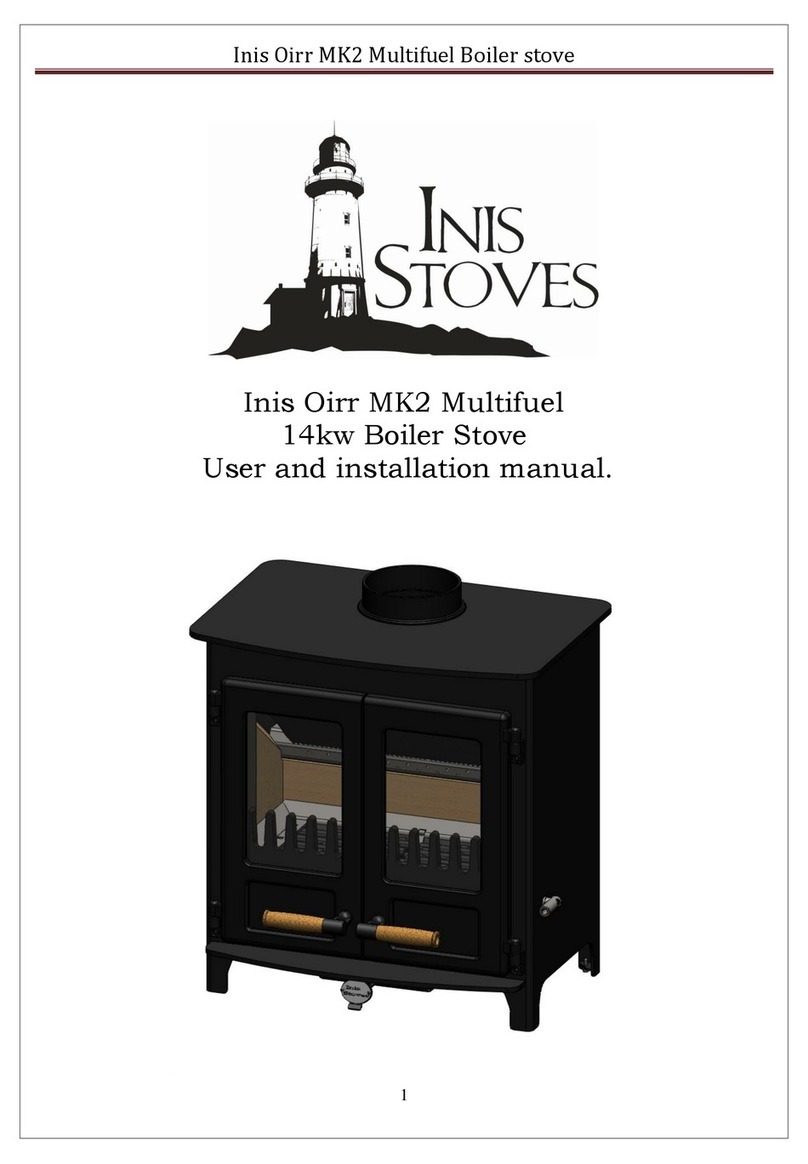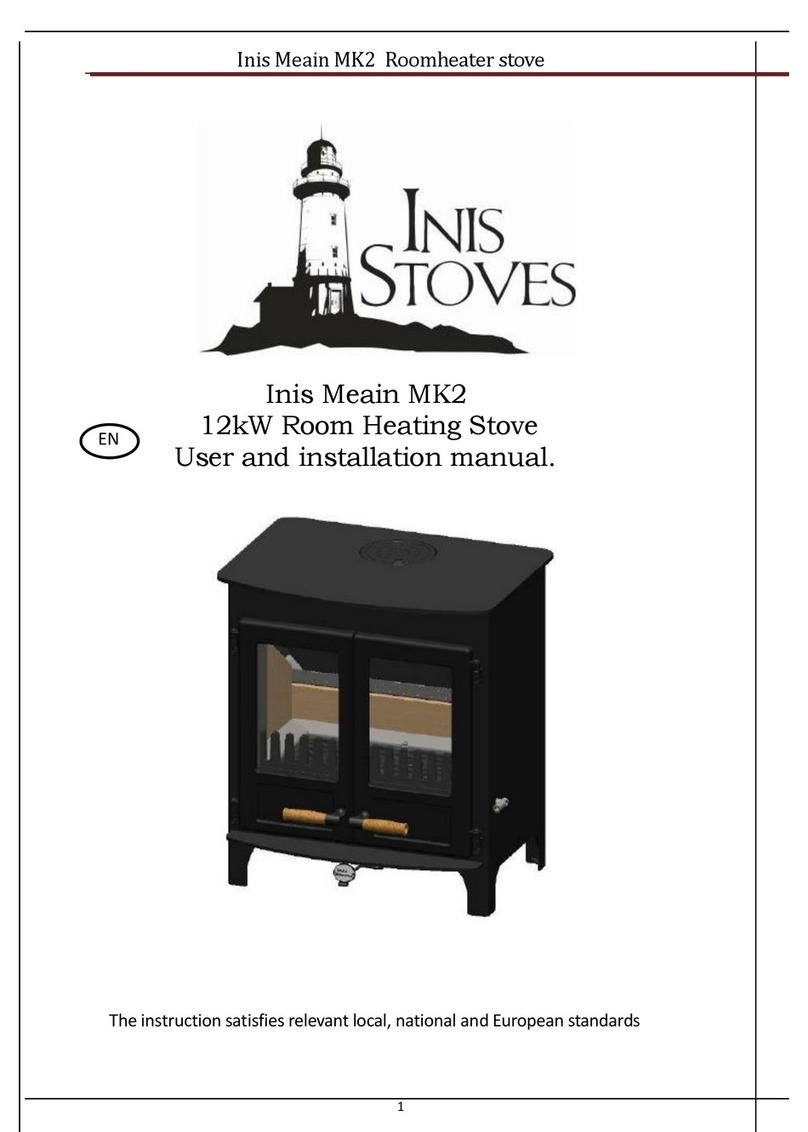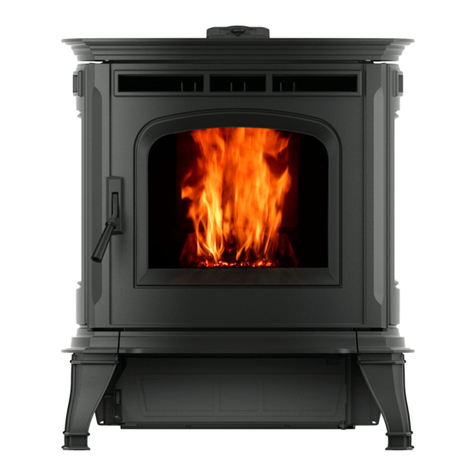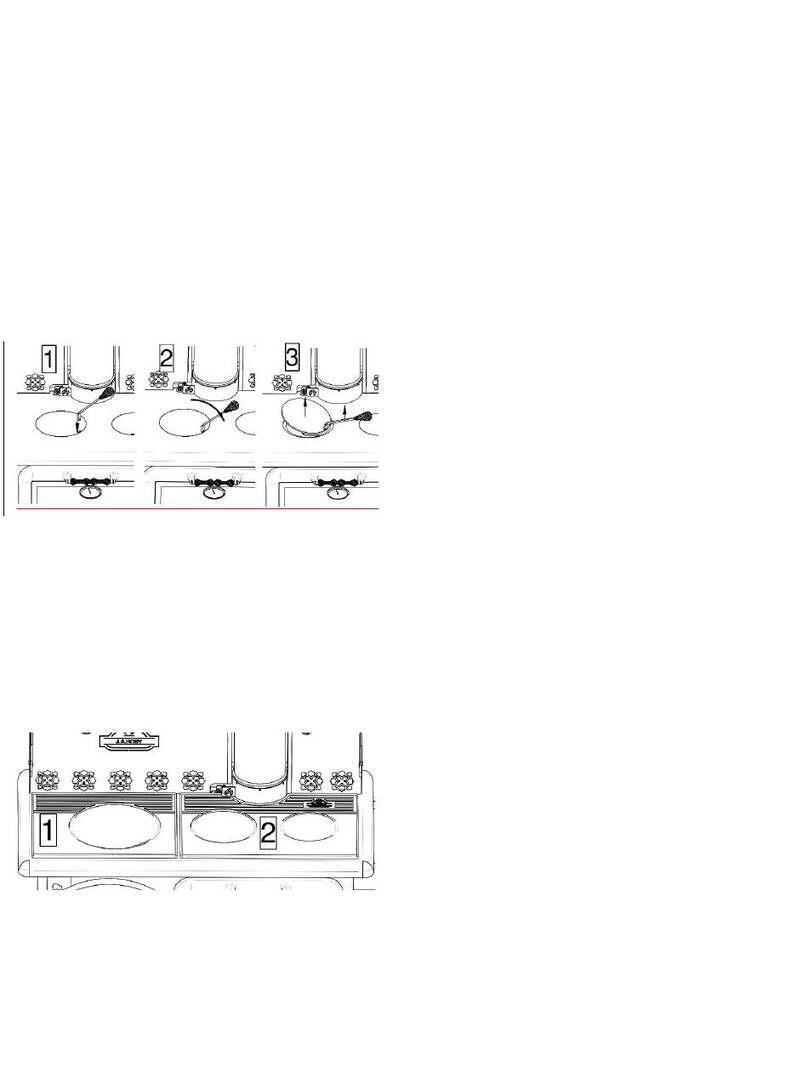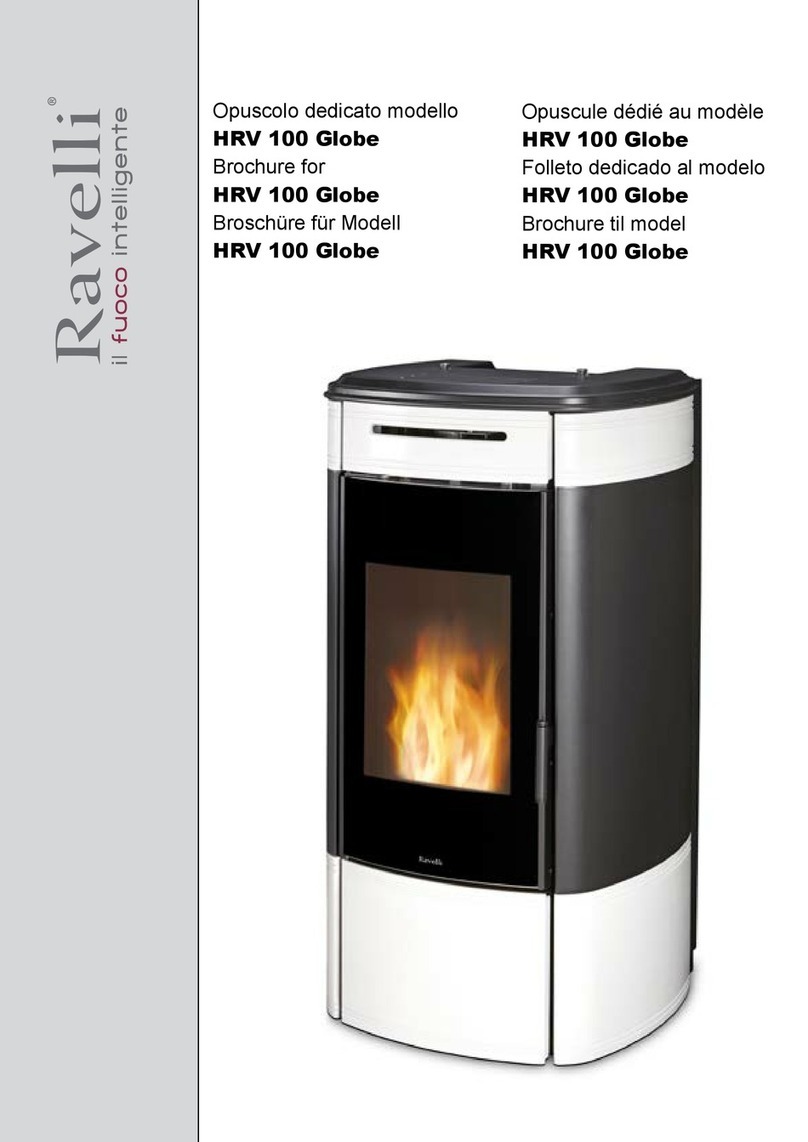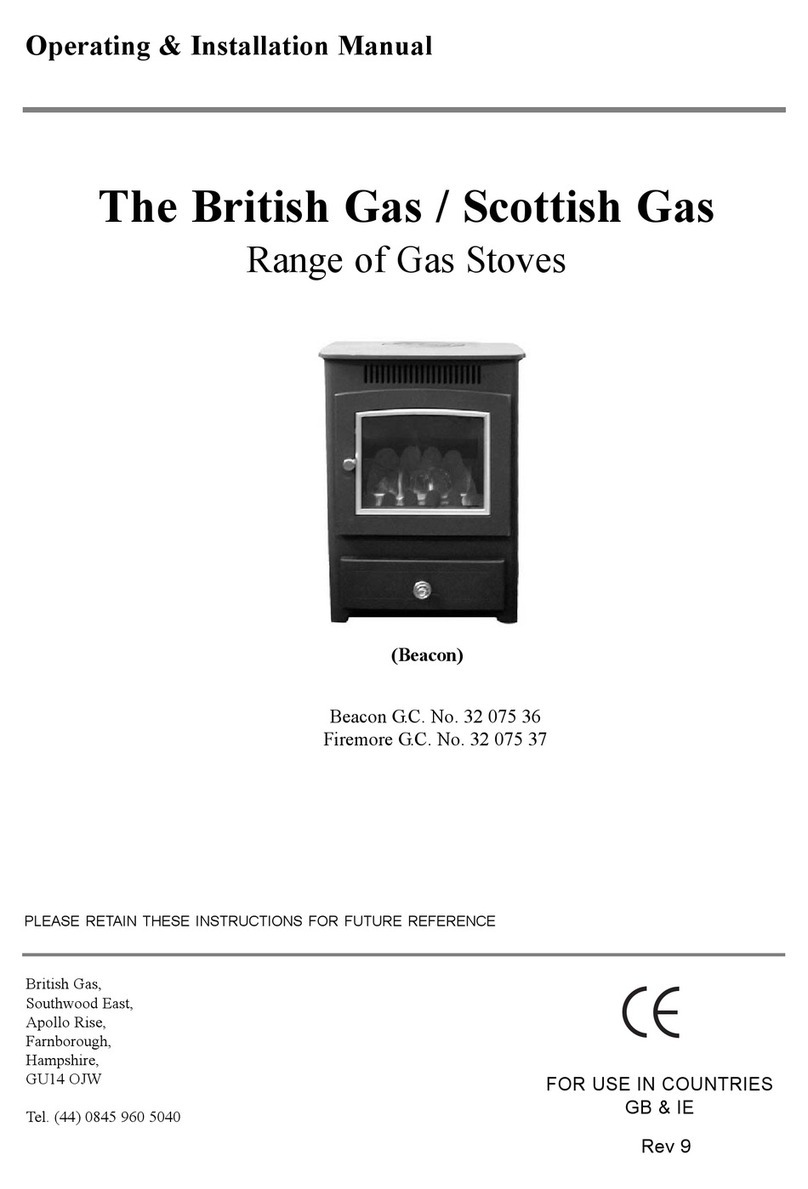INIS InisBofin Operating manual

InisBofin Insert Boiler Multi-fuel Stove
1
InisBofin
Insert boiler
User and Installation
Manual

InisBofin Insert Boiler Multi-fuel Stove
2
Contents
Stove user Manual
Cover page……………………………………………………………………………………………………………………………………1
Contents…………………………………………………………………………………………………………………………………………2
Safety notices…………………………………………………………………………………………………………………………3
Stove Features…………………………………………………………………………………………………………………………4
Paint curing………………………………………………………………………………………………………………………………5
General points…………………………………………………………………………………………………………………………6
Recommended Fuels…………………………………………………………………………………………………………………6
Lighting the stove………………………………………………………………………………………………………………7
Refuelling……………………………………………………………………………………………………………………………………8
Continuous Burning………………………………………………………………………………………………………………8
Ash Clearance……………………………………………………………………………………………………………………………9
Stove cleaning & maintenance……………………………………………………………………………………9
Troubleshooting………………………………………………………………………………………………………………………11
Stove Dimensions……………………………………………………………………………………………………………………13
Stove installation Manual
Health & Safety notices…………………………………………………………………………………………………14
Air requirements……………………………………………………………………………………………………………………15
Stove Preparation…………………………………………………………………………………………………………………16
Chimney……………………………………………………………………………………………………………………………………………16
Hearth & Fire Surrounds…………………………………………………………………………………………………18
Stove Fitting……………………………………………………………………………………………………………………………19
Central Heating System……………………………………………………………………………………………………22
Pre-Firing check……………………………………………………………………………………………………………………27
First Firing and commissioning………………………………………………………………………………27
Exploded view and parts list……………………………………………………………………………………28

InisBofin Insert Boiler Multi-fuel Stove
3
Congratulations on the purchase of
your new InisBofin insert boiler
stove. We here at Inis Stoves
truly love building high quality
stoves for our customers. The
stove we produced for you was not
just an appliance to us; we hope
that you will see it as a focal
point in your home. When fitted
and operated correctly, you should
enjoy many years, trouble free
warmth from your InisBofin insert
boiler stove. Please read the user
manual fully before operating the
stove.
Safety Notice
Fireguard:
Ensure that a certified fireguard
to BS8423:2010 is always used
where the elderly, infirmed or
children have access to the stove
to prevent burning. Proper
supervision of the elderly,
infirmed or children around the
stove is required at all times and
please be aware that the stove
remains hot for many hours after
the fire has gone out.
CO and Fire alarm:
Inis Stoves highly recommend the
fitting of fully certified CO
alarm to BS EN 50292:2002 and
Building Regulations require that
whenever a new or replacement
fixed solid fuel or wood/biomass
appliance is installed in a
dwelling that a carbon monoxide
alarm MUST be fitted in the same
room as the appliance. Inis Stoves
also recommend that a fire alarm
is fitted and that regular checks
to be sure the alarms are
operational for the proper
protection for you, your family
and your home.
PROVISION OF A CARBON MONOXIDE
ALARM MUST NOT BE CONSIDERED A
SUBSTITUTE FOR EITHER INSTALLING
THE APPLIANCE CORRECTLY OR
ENSURING REGULAR SERVICING AND
MAINTENANCE OF THE APPLIANCE AND
CHIMNEY SYSTEM.
Ensure that the installer of this
stove is fully qualified to
complete all relevant work.
The Installation must be completed
in accordance with all National,
European Standards and all local
Codes.
Fume emissions into the room
must not be tolerated:
If this happens close the door of
the stove, open up some windows,
close the damper and let the fire
out. Call a qualified chimney
expert to ascertain the problem
before lighting the stove again.
Chimney fire:
In the event you believe there may
be a chimney fire, close the stove
door, close the damper and allow
the fire to die out. If you still
believe a fire exists, call the

InisBofin Insert Boiler Multi-fuel Stove
4
Fire Brigade immediately. After a
chimney fire, the chimney must be
examined by a chimney expert
before using the stove again.
Stove Features
Figure 1 below shows how to use
the stove door handle. Gently pull
the handle out from the stove and
it swings upward.
Fig.1
As can be seen in Fig 2 below, the
riddling mechanism is located on
the left hand side of the stove
towards the bottom of the facade.
To operate the riddling mechanism,
insert the tool into the
rectangular slot as shown. Then
the hand tool faces downward at 45
degrees the riddling grate is in
the closed position. This position
is used when burning wood.
Fig.2
When the hand tool is raised fully
up at 45 degrees, the grate is in
the open position and this
position must be used when burning
manufactured solid fuels and peat.
To riddle the grate, use the
riddling hand tool and gently
oscillate the riddler back and
forth. Avoid using excessive force
to avoid damaging the riddling
mechanism.
Normally it is advisable to have
the doors closed at all times
except when re-fuelling, de-ashing
and when igniting the stove. If
excess fumes flow into the room
results at any time when the door
is opened, it should be closed
immediately and expert help
sought.

InisBofin Insert Boiler Multi-fuel Stove
5
Figure 3 below shows the stove
damper controls.
Fig.3
The stove has been designed for
ease of use by the operation of
just one air control slider. The
damper slider governs all the air
flows throughout the stove for
optimum efficiency and
performance. This adjustment
slider is found on the right side
of the stove towards the top of
the facade. To operate the damper
slider, use the hand tool to move
the slider downward fully to close
the damper and upward to open the
damper. No adjustment of the
damper assembly is necessary. To
help keep the stove glass clean,
use kindling which lights quickly
and fire the stove at a high rate
for 45-60 minutes after lighting
to fully heat the glass. Operating
the stove for extended periods of
time at low outputs will lead to
blackening of the glass.
Paint Curing
Please adhere to the curing
procedure described below as over-
firing the stove before the paint
has cured will lead to fading of
the paint and this is not covered
by your warranty.
When the stove is used for the
first number of times the process
of curing the paint will occur. To
do this a small fire using only
kindling wood should be started for
approximately 30 minutes, allow the
stove to cool slightly then repeat
the small fire using only kindling
wood for another 20 minutes. The
final action to cure the paint is
to put on a normal sized fire
before the stove has cooled down,
at full output for at least one
hour. The stove paint will emit
fumes which are non-toxic but a
window should be opened to avoid
fumes building up during the curing
process.
Before you operate the stove,
consult with the installer that all
the relevant work has been carried
out correctly and that they have
ignited a small fire in the stove
and it is operating correctly.
Check that all relevant local,
national and European Standards
have been adhered to when
installing the stove.

InisBofin Insert Boiler Multi-fuel Stove
6
General Points
1. Never use liquid fuels in the
stove
2. When in operation, the stove
will be hot and care should
be taken to avoid injury.
3. When using solid fuels like
smokeless coal, the ash pan
should be emptied before it
is filled completely to avoid
damage to the grate.
4. Never attempt to modify the
stove in any way and always
use genuine Inis Stove spare
parts.
5. Never place combustible or
non-combustible materials
near, in or around the stove
that will interfere with the
proper heat convection and
air supply to the stove. The
stove surround should be
fireproof. Never leave the
stove fuels too close to the
stove.
6. For safe and efficient
operation of the stove,
regular cleaning of the
stove and chimney is
essential. Dirty surfaces
within the stove will lead
to poor heat transfer to the
boiler and the room and will
waste your money.
7. Care should always be taken
when emptying the ash pan of
the stove. Hot ashes should
never be put in a plastic
dust bin, bag or container.
Ideally, empty the ash pan
when the ashes are cold.
8. Inis Stoves is dedicated to
the principal of using
renewable fuels in all our
stoves. Using wood as fuel
goes a long way in reducing
your home’s carbon footprint
and also reduces our
dependence on imported
energy. We recommend using
nationally sourced wood fuel
with a maximum moisture
content of 20% in our stoves.
9. To refuel the fire, open the
door and place the fuel in
the firebox. Fill the
firebox without fuel
overflowing the front
firebar.
10. Never burn household
waste in the stove.
Fuels
Inis Stoves recommend that wood
fuel be used to fuel the stove for
three good reasons,
A. It is considered a low carbon
fuel which is a big environmental
benefit,
B. High quality low moisture wood
fuel can now be nationally and
locally sourced which lowers
foreign fuel imports and helps the
economy by keeping your money in
the local area.
C. Wood fuels are easy to handle,
generally clean, easy to light,

InisBofin Insert Boiler Multi-fuel Stove
7
burn brightly and have a very low
ash content usually less than 1%.
If possible, always use light dry
kindling when lighting the stove.
Wood with a maximum moisture
content of 20% should be used. If
the moisture content is any
higher, the fire will produce much
less heat than is possible and the
stove glass, stove and chimney
flue will build-up tar deposits.
Hard woods like beech ash and oak
are excellent long burning wood
fuels and tend to be better than
soft woods like pine etc. The
smaller the thickness of the wood
the faster the fuel will burn. For
long burn time at night time etc.
use larger size pieces of wood.
The wood should have a maximum
diameter of approximately 3-4
inches and approximate length of
8”-12”.
Manufactured wood fuels that
contain no additives are also an
excellent fuel and burn very hot
and clean with little ash.
SOLID FUELS:
There are numerous fuels on the
market that contain partial or
full percentages of Petroleum
coke. These fuels are high in
sulphur with leads to acid attack
of the stove, flues and chimney.
Petroleum also has low ash content
which will damage the stove grate
and other parts of the stove in a
very short period of time.
Examples of these fuels are
“Calco”and “Superblend”.
Using any fuel containing
Petroleum coke will invalidate
your warranty. To find a complete
list of approved solid fuels for
use in closed appliances, please
consult the Hetas website at
www.hetas.co.uk/wp-
content/mediauploads/HETAS_Guide_F
uels.pdf
Don’t burn coal pellets, singles
or coal dust. Burning slack is not
recommended.
Try and ensure the solid fuel is
not wet when fuelling the stove.
Peat and briquettes can be used
provided they are dry.
Lighting the fire
The key to quick and easy lighting
of the stove is the ample use of
kindling wood. If too little
kindling is used, the fire will be
slow to start and will produce
excessive smoke and deposits on
the glass.
The grate should be put in the
open position (handle up) and the
damper fully opened. Firelighters
or well crumpled paper should be
surrounded with small pieces of
kindling toward the FRONT of the
grate. As the stove is quite deep,
it is advisable to light the fire
towards the front of the stove to

InisBofin Insert Boiler Multi-fuel Stove
8
get heat to the room as early as
possible.
Light the fire and with the door
lock engaged but the door slightly
ajar let the fire light up. After
the kindling is well alight add
larger pieces of fuel to the fire
and after a few more minutes this
fuel should be well alight. The
stove can be fully loaded now and
a bright high temperature fire
should result. Once the fire is
well alight the door can be fully
closed. When using wood fuel, at
this point the grate can be
closed. The stove damper will
normally not require adjustment
down until after at least forty
five minutes, as the stove will
take this time to fully heat up.
Under normal conditions the damper
will be moved between fully opened
and half way closed.
Refuelling
Do not let the fire burn down too
low before refuelling as the new
fuel will smoke excessively and
will require a long time to become
fully alight. Open the damper
fully every time you refuel the
stove for at least five to ten
minutes to aid rapid lighting of
the new fuel (not necessary when
using dry wood fuel). This will
help prevent excessive smoking and
will help to keep the stove and
the glass clean. Once the new fuel
is well alight, the damper can be
adjusted down to an appropriate
setting.
Continuous burning
The InisBofin insert boiler stove
is capable of continuous burning
making overnight burning possible
at a reduced output. To achieve
overnight burning, open the damper
fully and fill the firebox) with a
full charge of fuel and let it
ignite fully (Empty the ash pan if
using solid fuel). When the fire is
burning brightly, the stove damper
can then be closed down. With the
damper mostly closed and the
correct draft in the chimney, an 8-
12 hour burn time is possible. For
more heat output over a shorter
time span the damper can be opened
up as necessary. To avoid excessive
blackening of the glass the damper
should be left slightly open.
To revive the fire after overnight
burning, riddle the grate, refuel
the firebox with a small amount of
light kindling fuel and open the
damper fully. A strong fire for at
least twenty minutes is required
to burn off excess build-up of
soot deposits after a prolonged
period at low output.
Please bear in mind that operating
the stove at very low outputs is
not the most efficient way to burn
the fuel and the stove and chimney
will require more cleaning with
the possibility of creosote build-

InisBofin Insert Boiler Multi-fuel Stove
9
up in the chimney when the stove
is operated this way.
Ash clearance
The stove has one ash pan designed
for ease of handling. The ash pan
should be emptied before it gets
overfilled to protect the grate
from over-heating especially when
burning solid fuels as the ash is
an excellent insulator and excess
build-up of ash will cause grate
damage.
Great care should be observed when
emptying the ashes as it can be
very hot and it could start a fire
if it comes into contact with
combustible material like plastic
bins etc.
Stove and chimney
cleaning and
maintenance
Stove cleaning:
Regular cleaning is essential for
safe and efficient operation of the
stove.
During the heating season it is
recommended to clean the stove
weekly or fortnightly. Inspect on a
regular basis the condition of the
door seal and if found to be worn
replace it immediately.
Only clean the stove when it is
fully cold. A Pair of gloves should
be used when cleaning the stove and
care should be taken to avoid
injury as a number of the stove
components are quite heavy.
As per figure 5 below, to remove
the baffle assembly for cleaning,
pull the top casting up slightly
and forward to release the front
mounting clip and then lower the
plate and remove from the stove.
Above the cast iron baffle will be
a vermiculite insulation plate.
This can be lowered away if it
doesn’t come down with the cast
iron baffle. Access to the flue
outlet is now possible for cleaning
and the chimney can be cleaned up
through the stove at this point.
Fig 5
To clean the bottom part of the
stove the rear airway must be
cleared out, see Fig.6 below
1. Remove the firebox cast iron
side plates.

InisBofin Insert Boiler Multi-fuel Stove
10
2. Remove 3-4 riddler bars
starting at the second from
the back and working forward.
To remove the riddler bars
for airway cleaning first
lift the front of each
firebox side plate and swing
toward the stove centre. They
can them be lifted out of the
stove. A knife or screwdriver
can be used to lever forward
the rear cast plate at the
top of the casting and then
it can be lifted out of the
stove to expose the rear
airway channel for vacuuming
out. To remove a riddler bar
first put the bars in the
half way opened position
(Hand tool in horizontal
position), then remove the
ash pan. Use a knife or
screwdriver to lift the left
side of the riddler bar
slightly forward as you lift
it and then the bar can be
lifted away.
3. (Fig.6) Vacuum out all visible
ash thoroughly. Re-assembly is the
reverse of dis-assembly.
Fig 6
4. Check that the riddler mechanism
operates free and clear.
Inis Stoves highly recommends
annual servicing of the stove as
the service engineer will ensure
correct and thorough cleaning of
the entire stove.
Inspect all internal parts of the
stove and replace if needed.
Only Inis Stoves or an approved
Engineer on our behalf should
modify the stove in any way.
Paint work:
To clean the paint of the stove we
recommend the use of a dry cloth
containing a small amount of light
oil, for example “WD40”. Avoid
using abrasive material on the
paint of the stove.
Door seals:
The door seals should be inspected
regularly to check for damage and

InisBofin Insert Boiler Multi-fuel Stove
11
changed if needed. Also check the
seal on the door glass for
tightness and seal integrity.
Shutdown:
If the stove is to be unused for a
prolonged period of time, for
instance over the summer months,
the stove and chimney should be
fully cleaned and a light oil like
“WD40”applied to all moving parts
and all surfaces within the stove
to displace moisture. The damper
may be left slightly open to
facilitate a little air movement
through the stove and avoid
moisture build up. Avoid excess
opening of the damper as this will
result in excess heat loss through
the stove up the chimney. After a
prolonged period being unused,
inspect the chimney before use to
ensure no blockage has occurred.
Also ensure that the air vent to
the room of the stove is clear.
Trouble shooting
NOTE: Excessive fume
emission to the room must
not be tolerated.
Fire burns very rapidly and
refuelling periods are not being met:
1 Chimney draught is very high,
chimney damper may be required.
2 Fuel load too small for damper
setting.
3 Door seals are worn.
4 Adjust the damper to a lower
setting for proper fire control.
Fire will not burn properly:
1 Chimney draught is too low
2 Damper is closed
3 Chimney height too low,
flue/chimney seals leaking
4 Chimney blocked, damaged
5 Ash covering all air ways into
firebox
6 Fuel is wet
7 No permanent air vent present in
room.
Stove emits fumes:
1 Chimney blocked
2 Door seals require replacing
3 Excess down drafts in chimney
4 Chimney draughts below 25Pa when
warm.
5 Extractor fan affecting stove.
Some/all radiators not heating:
1 Check that the fire is burning at
full output
2 Check that the pipe stat for the
heating is not set too high or too
low. (Typical range of
temperatures 55*C-60*C)
3 Check if the system needs
balancing and that the radiators
are turned on. Check that a system
link isn’t preventing flow to the

InisBofin Insert Boiler Multi-fuel Stove
12
required radiators and that the
radiators don’t require bleeding.
4 Ask the installer to check that
the stove is sitting level and
that air is not built up in the
boiler.
5 Check that the pump is working.
6 Check that the flow rate of the
pump is not set too high or very
low due to blockage etc.
Riddler grate locks up when
burning solid fuels:
When burning solid fuels like
smokeless coal, the grate must
always be kept in the open
position. The grate can be riddled
by oscillating the grate back and
forth without excessive force
being used. The grate is not
designed to fully close when
burning solid fuels. If the grate
jams it may be due to a foreign
particle like a stone or nail
jamming the riddler action. To
clear a jam, let the stove
completely cool down, remove the
cast iron firebox side plates and
remove the riddler bars starting
at the front. Clear any ash and
particles and reassemble the
riddler assembly. The problem will
usually be solved by this process.
Glass blackens excessively:
If the stove is fitted correctly
and the correct lighting and
operation of the stove is adhered
to, blackening of the glass should
always burn off after a period of
full output. A poor draught and or
the use of wet or improper fuel
will often lead to excessive glass
blackening. Often clean glass
operation will be attained with a
little experience of operation.
Using a ceramic cooker cleaner for
instance “Mr Muscle oven cleaner”
is excellent at cleaning the glass.
Please refer to manufacturer’s
instructions on these products for
proper and safe use.
Chimney fire:
If the stove and chimney are kept
clean, no fire should occur. If
however it does happen, close the
stove damper fully, close the stove
door tightly. Only once the fire in
the stove and chimney has gone out
should the stove be opened and the
stove and chimney cleaned
thoroughly. If the fire is
substantial and doesn’t extinguish,
the fire brigade should be called.
After a bad chimney fire, expert
help should be sought to have the
chimney examined for any damage
before the stove is used again.
Freezing:
If there is any reason whatsoever
as to believe that any part of the
piping system may be frozen, do not
use the stove.
CO Alarm Sounds:

InisBofin Insert Boiler Multi-fuel Stove
13
If at any time the Co (Carbon
monoxide) alarm sounds, open all
windows and doors, close down the
stoves and leave the room. After it
has been deemed safe to re-enter
the room only after the fire has
gone out, it MUST be established as
to the reason why the alarm sounded
before any attempt is made to re-
light the stove.

InisBofin Insert Boiler Multi-fuel Stove
14
Stove installation Manual
Specification
Output Kw
Water Kw
Room Kw
13.5-16.9
12.0-14.0
1.5-5.0
Flue Diameter
153mm 6”
Flue Gas Temperature
ºC
282-395
Fuels
Wood, eco fuels,
peat dried,
smokeless coal
Min distance to
combustibles
Above mm
Front mm
Floor mm
Sides mm
525
550
350
350
CO% @ 13%O2
0.29
Stove Mass Kg.
141
Minimum Flue Draft
25 Pa, 0.25mbar
Maximum boiler
pressure
2 Bar
Boiler fittings
1” BSP
Refuelling interval
1Hr wood,
2Hr M.S.F
The heat outputs as shown were
obtained using well-seasoned
hardwood using a refuelling time
of 1 hours. Similar results are
achieved using Smokeless coal
(MSF) over a 2 hour refuelling
period.
Health and Safety
precautions
Please ensure that the
installation of the stove complies
with all the requirements of the
relevant Health and safety at work
acts applicable.
Some materials used in fire cement
are caustic and contact with the
skin should be avoided. In case of
contact with the skin wash with
plenty of cold water.
If any structural work is required
for installation please take note
of the possible presence of
asbestos. If the presence of
asbestos is found to be the case
please contact a registered
asbestos removal firm.
In addition to installation
instructions supplied, the
requirements of BS.8303 and
BS.6461 Parts 1&2; 1984 must be
fulfilled. Also all local
authority bylaws and domestic
building regulations including
those referring to national and
European Standards regarding the
installation of solid fuelled
burning appliances, flues and
chimneys must be followed.

InisBofin Insert Boiler Multi-fuel Stove
15
Air requirements
Proper air supply must be insured
to the room into which the stove
is to be installed. A permanent
vent opening with a minimum free
area of 55 cm²must be present and
care should be taken to ensure
that this vent cannot be blocked.
Under no circumstances should
there be an extracting fan in the
same room as the stove, to avoid
the possibility of combustion
gases being drawn into the room.
If a chimney draft stabilizer is
fitted to the chimney, a larger
vent is required of at least 8.5
cm²per Kw of output over 5kw.
The vent must be of a permanently
opened design. The vent must be
dimensionally stable and must not
be prone to collapse. There must
not be a facility to close the
vent. If the vent crosses into a
cavity to the outside on an
external wall it must span the
full span across the cavity and
must be weather resistant to
prevent the ingress of moisture.
The vent must not be located at a
position in the room that will
result in an air current
traversing through normally
occupied areas of the room.
Care must also be taken to ensure
that the vent cannot be blocked by
object left against the wall
outside or debris like leaf litter
etc.
A larger vent is required if there
is an appliance like an extractor
fan or tumble drier in an
adjoining room. To ascertain if
more venting is required, these
appliances should be operated
together and all external windows
and doors closed to detect
spillage into the room from the
stove.
If the vent crosses into another
internal room, that room should
not be a bedroom, bathroom or room
with a shower and it must not
cross into another internal
separate building for example a
bedsit.
Especially air tight buildings:
If the stove is to be installed
into an especially air tight house
at least 5.5 cm² per Kw of stove
output must be installed to ensure
proper operation of the stove.
External Air provision:
This stove has the provisions made
for connection to an external air
system for buildings where
mechanical heat ventilation is
installed. There are 3 positions
for connection to an external air
pipe, at the centre rear facing
backward and each side of the
stove at the rear facing away from
the stove.

InisBofin Insert Boiler Multi-fuel Stove
16
It MUST be checked if using the
external air provision that the
base plate if fitted so that the
front air grill on the front
bottom face of the stove are
covered by the base plate. If
these grills are open then the
base unit must be turned around
for external air mode. If
questions still remain please
contact Inis Stoves for further
details. The required blanking
plate can then be removed and the
coupling bolted on instead.
Stove preparation
The crate should be carefully
unscrewed to avoid possible damage
to the stove. Remove the plastic
packaging. Use a screw driver to
remove the screw holding the stove
in place. The wooden crating the
stove was shipped in can be cut up
for fuel in the stove. Take great
care to avoid damaging the facade
of the stove when removing the
stove from its shipping crate and
moving it into position.
To help with fitting of the
stove, the stove door and facade
and baffle assembly should be
removed. The door is removed by
opening the door and lifting up
approx. 20mm until the hinges are
clear and lift away. Take great
care not to drop the door as it is
quite heavy and the door glass can
easily be broken.
Façade removal:
The facade is removed (See Fig 8)
by unscrewing of the two screws on
both sides of the façade at floor
level, gently but firmly lift the
facade approx. 5mm by holding
towards the left and right sides
of the façade along the top to
avoid deforming the facade in the
middle. When the façade has been
lifted up, gently swing forward
from the top and dis-engage the
mounting tangs and lift away. Be
aware of the damper slider on the
left hand side and the riddling
mechanism on the right hand side
when pulling the façade out.
Remove the baffle assembly as
shown in the user manual and
remove the firebar and ash pan.
With the baffle assembly removed
the flue collar can be removed
prior to fitting of the stove.
Chimney
This stove is not suitable for a
shared flue arrangement. This
stove is only suitable for
installation into a fireplace with
an existing chimney. Chimneys must
satisfy standard EN 15287:2007. A
draught test should always be
performed prior to the fitting of
the stove to ensure that a proper
draft in the chimney is present
(Min 25Pa constant when warm.). A
chimney height of at least 4m from
the top of the stove and

InisBofin Insert Boiler Multi-fuel Stove
17
must be at least 150mm diameter or
150mmx150mm square. The chimney
must be in good condition, be
cleaned and free from cracks and
blockages. The chimney must not
have too great a cross sectional
area (200mm diameter maximum) and
if it has, it is recommended to
line the chimney with a suitable
liner for solid fuels to BS EN
15287-1:2007 with suitable
refractory infill around the
liner. Please refer to EN13384-1
for calculations on the particular
chimney for suitability.
The outlet of the chimney should
be above the roof of the dwelling
in accordance with the provisions
of The Building Regulations Part
J.
All chimneys and flues used must
be sealed for the best possible
performance. The draught in the
chimney must be at least 25 Pa
when warm and must not suffer from
down draughts and if there is an
excessive draught in the chimney a
draught stabiliser should be
fitted. If any doubt exists please
contact a chimney expert. If it is
an existing chimney that has been
is use with an open fire, the
chimney must be thoroughly cleaned
and inspected. Two to three weeks
after the stove has been in use,
have the chimney cleaned again as
soot previously secure may come
loose as the flue gas from the
stove is quite different than that
from an open fire.
Particular care must be taken if
the dwelling has an old chimney as
these most often have a very large
cross section. The use of a
register plate may be needed along
with any other required remedial

InisBofin Insert Boiler Multi-fuel Stove
18
work on the chimney structure
before the liner and infill are
used. Any flue sections used in
the installation must not have 90º
bends with 45º bends maximum.
Hearth and Fire Surround
If the installer has any doubts as
to the positioning of the stove
and necessary fire proofing,
expert advice should be sought
before any work begins. The stove
must be placed onto a fire proof
hearth of at least 12mm in depth
that is flat and level. The stove
positioning and hearth size are
governed by building regulations
for class 1 appliances. As can be
seen below in Fig 9 the minimum
sizes of the opening are shown
with minimum hearth thickness. The
hearth must extend at least 300mm
in front of the stove and 150mm to
the sides.
Fig 10 shows the minimum distances
to combustibles.
Fig 9

InisBofin Insert Boiler Multi-fuel Stove
19
Fig 10
The minimum depth of the recess
for the stove from the front face
should be 390mm. In most cases
this will require that the removal
of the fireback and the removal of
loose material. The distance from
the face of the fireplace to the
centre of the flue should be
checked to verify it is between
230mm and 330mm. Please ensure
that the stove in the recess sits
flat with the hearth.
Stove Fitting
There are two main methods of
connecting the stove to the
chimney. Method 1 is to use a
closure pipe adaptor section and
an extension piece. Method 2 is to
line the chimney with a suitable
6” liner for solid fuel and
connecting to the stove with a
solid section connector.
Method 1.
The fire surround will usually
need to be removed to fit the
stove and facilitate plumbing of
the stove. To aid rapid heating of
the water it may be beneficial to
place some fibre glass around the
boiler of the stove when
installing the stove. The closure
pipe adaptor section of flue
should have an offset built in to
allow for the difference in depth
from the front face of the
fireplace to the flue outlet on
the stove. Once the closure pipe
adaptor has been put in the

InisBofin Insert Boiler Multi-fuel Stove
20
correct position, fire cement
should be used to make a tapered
seal between the clay liner and
the adaptor to ensure any
condensate or rain will flow into
the flue and not down around the
stove body. The extension piece of
flue is now pushed fully up onto
the closure adaptor to allow for
the stove to be positioned into
the proper position. Please note
that the extension pipe must fit
OVER the bottom end of the closure
adaptor pipe. The stove facade
should be offered up to the stove
at this point to ensure proper
depth placement of the stove. Now
pull the extension pipe down
through the stove and using some
fire cement fit the flue collar to
the end of the extension pipe and
when fully sealed, push the flue
collar up into position and bolt
into place.
Check that the joints are all
fully sealed with fire cement and
haven’t being damaged during
fitting. The stove can now be
plumbed as per the section below
on central heating system.
Finally fit the facade onto the
stove ensuring that the damper
mechanism is free and clear in
operation. Once the liner is fully
fitted to the stove, vermiculite
infill can be used to fill in
around the liner down to the
stove. All pipe work should be
fully lagged to prevent excessive
heat loss from the system
.
Method 2
The fire surround will usually
need to be removed to fit the
stove and facilitate plumbing of
the stove. To aid rapid heating of
the water it may be beneficial to
place some fibre glass around the
boiler of the stove when
installing the stove. The stove is
placed in position and the facade
is placed on the stove to check
that the depth of the stove into
the recess is right. A straight
section of solid fuel flue pipe
approx. 6”-8” long with a flexible
liner adaptor on the top of it
should be mounted to the bottom of
the flexible liner and fully
tighten the holding screws on the
adaptor. Push the flexible liner
and straight pipe section down the
chimney and pull down onto the
flue collar. The flexible liner
MUST fit into the adaptor on the
straight flue piece not over it.
Using some fire cement mount the
flue collar onto the bottom of the
straight pipe section and bolt the
flue collar into place with the
two bolts provided. Check that the
joints are all fully sealed with
fire cement and haven’t been
damaged during fitting in place.
Finish the installation of the
Table of contents
Other INIS Stove manuals
Popular Stove manuals by other brands
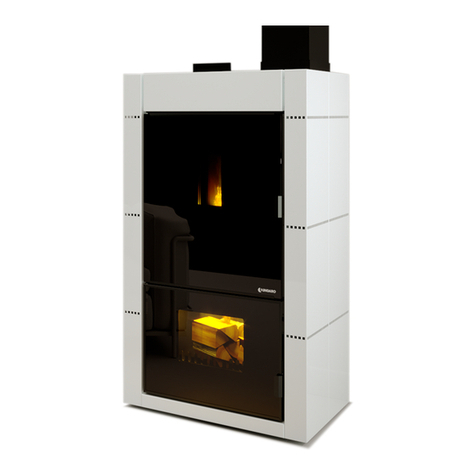
UNGARO
UNGARO BiFuel en ELS34 user manual
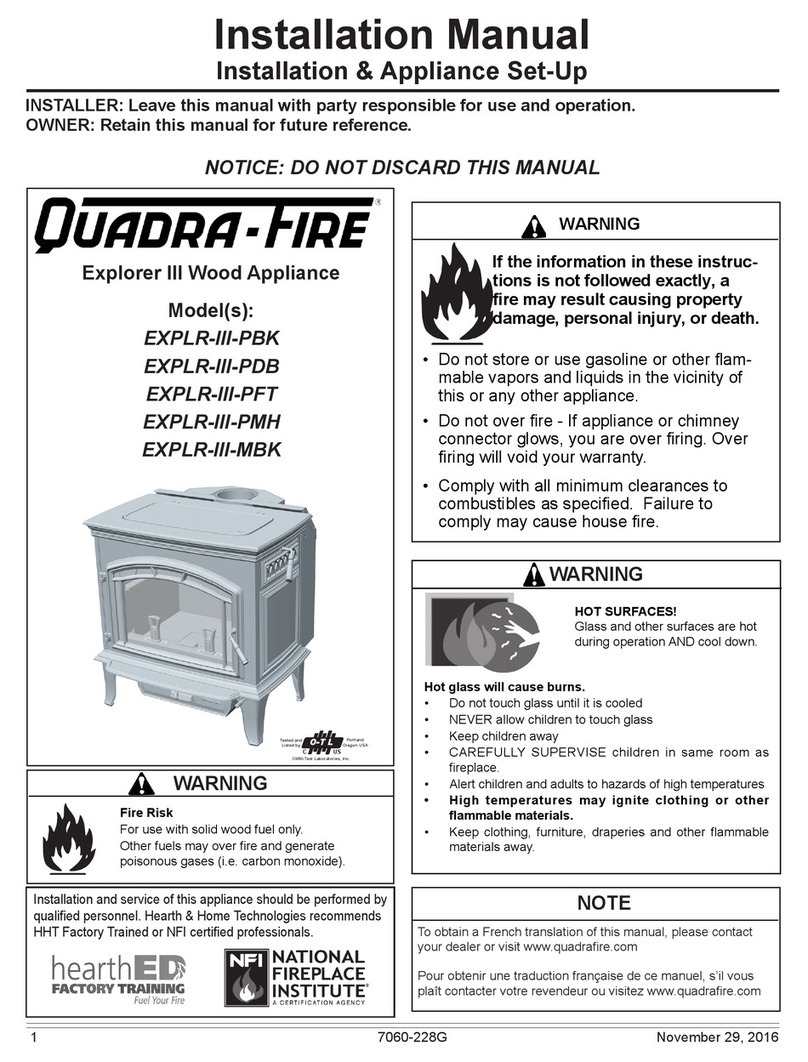
Quadra-Fire
Quadra-Fire EXPLR-III-PBK installation manual

Coleman
Coleman FYRESTORM 9770 Instructions for use
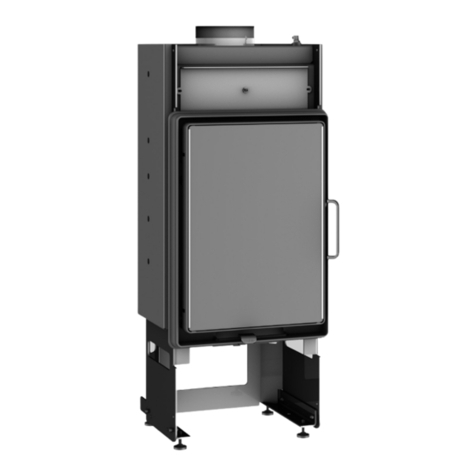
Buderus
Buderus Logastyle Convexus Important notes on installation/assembly
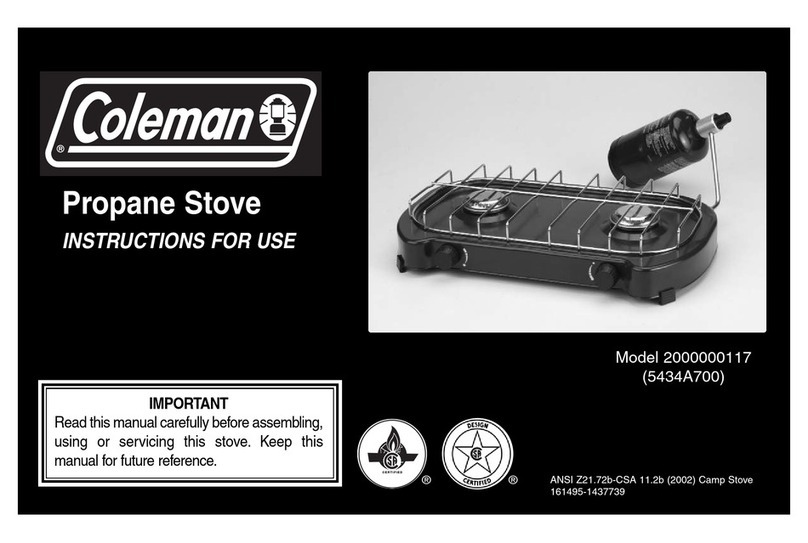
Coleman
Coleman 2000000117 Instructions for use
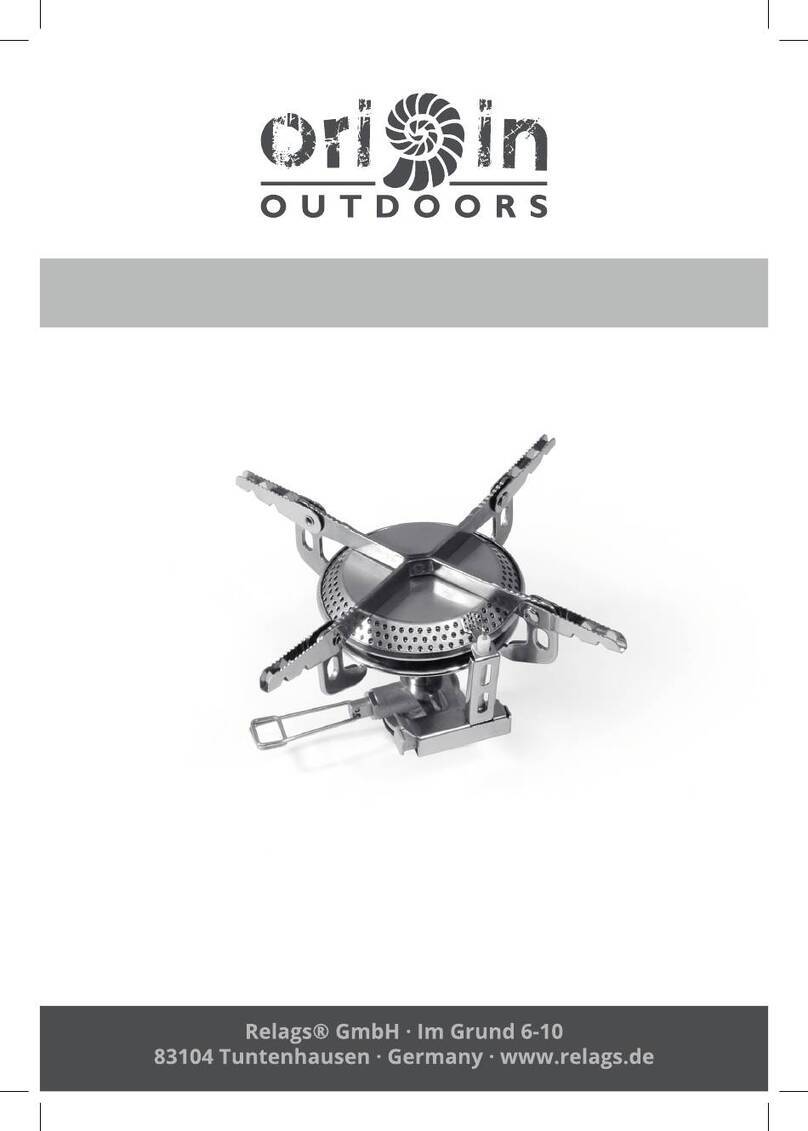
Relags
Relags Origin Outdoors SCOPE manual

CASTLE
CASTLE Serenity 41278 Operator's manual
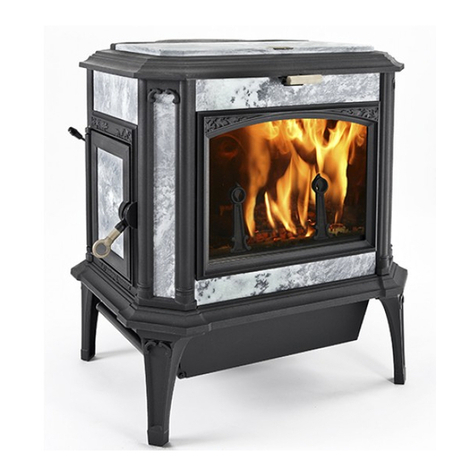
Woodstock Soapstone
Woodstock Soapstone Keystone owner's manual
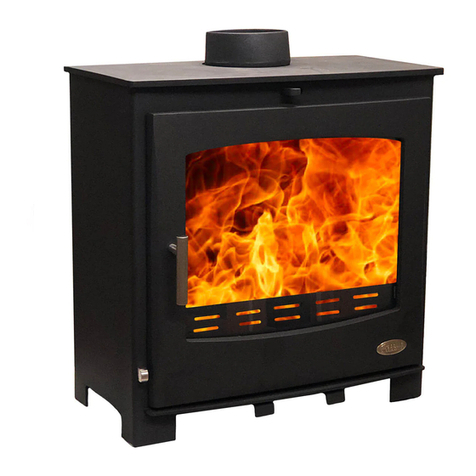
Woolly Mammoth
Woolly Mammoth WM 5 user manual

Morso
Morso 3600 Series Installation and operating instructions

Quadra-Fire
Quadra-Fire GRAND BAY 40 GB40FS Installation, operation, venting and maintenance instructions
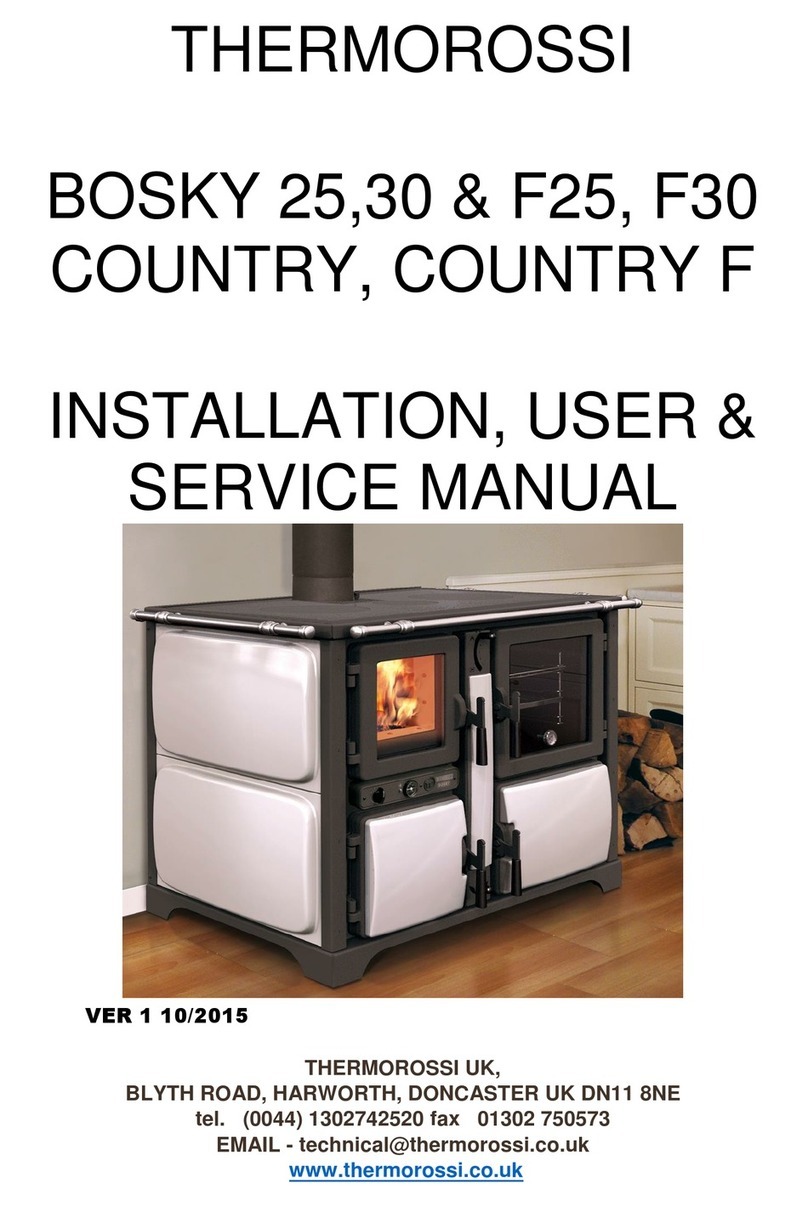
THERMOROSSI
THERMOROSSI BOSKY 25 Installation, user & service manual
